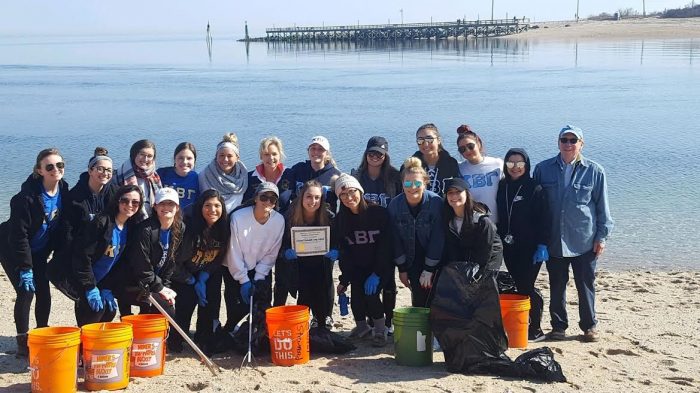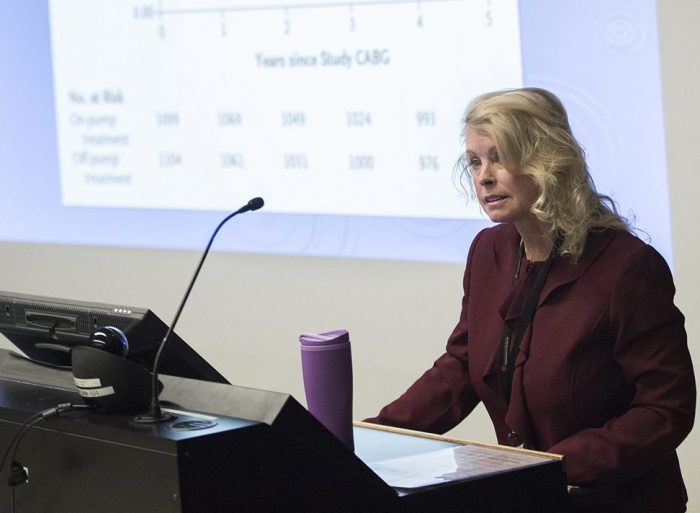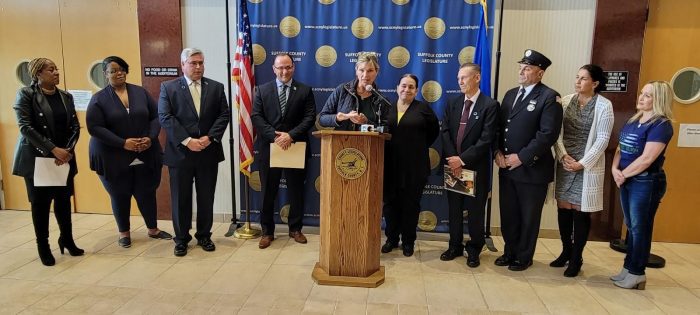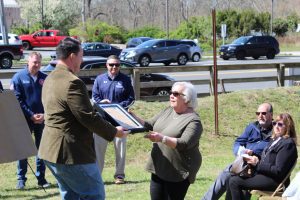By Daniel Dunaief
Publish or perish.
It’s the academic paradigm that defines the importance of getting great research and ideas in front of the public. Not only does publishing enable researchers to share discoveries, but it also provides additional rungs on a career ladder.
Science journals with greater impact can raise the visibility of up-and-coming researchers, helping them win more competitive grants, get papers published in other journals, and receive coveted promotions and tenure.
In a recent study led by A. Laurie Shroyer, Professor of Surgery and Vice Chair for Research at the Renaissance School of Medicine at Stony Brook University, women authors in positions considered significant — first, second or last — appeared at a rate that was below their representation in academic medical school faculty for the three top ranking medical journals.
Published in the journal PLOS ONE of 1,080 author citations from 2002 to 2019 in The Lancet, the Journal of the American Medical Association and the New England Journal of Medicine, a team of researchers determined that women were listed as senior, or last, authors 18.6 percent of the time. Meanwhile, 26.8 percent of women were first authors.
The first and last author rates for women were lower than the 37.2 percent of women full-time academic faculty members, according to Shroyer. “This is truly striking. I never in my wildest dreams thought [the publication rate for women] was this low” particularly for last authors.
Indeed, the percentages varied by journal, with the New England Journal of Medicine coming in the lowest for first authors, at 15.83 percent, and the Journal of the American Medical Association showing the highest rate, at 35.39 percent. Lancet had 29.39 percent.
In response to emailed questions about the study, officials at the New England Journal of Medicine indicated that the journal does not ask authors to self-identify.
“With a group of publishers lead by the Royal Society of Chemistry, we’re developing best practices for encouraging diversity among authors,” said Eric Rubin, M.D., PhD and Editor-in-Chief of the NEJM. “Diversity in medicine is important, and we are taking steps where we can to encourage change or highlight inequities.”
In September 2021, the NEJM published an editorial that said having more diversity among researchers is one way to help make trials more representative. Additionally, in April 2021, the NEJM published a Special Report about the diversity of the medical student body.
“We believe we must diversify our own ranks and encourage diversity at all stages of medical training,” Dr. Rubin added.
The Lancet, meanwhile, indicated that the data they collected on gender representation among their authors, peer reviewers and Editorial Advisory Board members led them to develop new strategies to improve gender representation in the editorial process, including a diversity pledge and no all-male panel policy, according to a public relations statement. All Lancet International Advisory Boards are now 50 percent women. This past March, the Lancet hosted a webinar on gender equity.
Shroyer lauded The Lancet for providing a public disclosure of their author gender profiles. The Lancet’s “positive actions are admirable,” she said..
A request for comment from the Journal of the American Medical Association was not returned by press time.
While the JAMA women first author rate did not demonstrate a statistically significant difference from the Association of American Medical Colleges, it was different, at 20.8 percent for last authors and for any significant author role, at 32.8 percent compared to 37.2 percent overall.
To be sure, Shroyer and co-author Henry Tannous, chief of Cardiothoracic Surgery Division and co-director of the Stony Brook Heart Institute, didn’t receive the kind of information that would help shed greater light on the publishing process.
Shroyer explained that it would be helpful to have journal-specific editorial office data on author specific and publication specific details for manuscripts received, reviewed and accepted.
Without access to editorial office databases, “it will not be possible to discern the potential reasons behind the lower women author publication rates,” Shroyer explained, adding that with the unknown rate of gender-based submissions, it is possible that the relative proportion of submitted articles published might not be different between men and women.
“My hope is that this publication may inspire all of these top medical journals to publish their own summary reports and to share their own editorial office databases to facilitate future research in this field,” she said.
An ongoing pattern
Shroyer began investigating the author and publication characteristics associated with multiple successful publications in top medical research journals in late 2017.
To determine if the pattern had changed over time, Shroyer and Tannous divided the publication rates into early, 2002 to 2008; mid, 2009 to 2014; and late, 2015 to 2019. Using samples from these years, Shroyer concluded that there were no differences over time.
Among other conclusions, Shroyer said women first authors less commonly published clinical trials as compared with observational study designs. Their projects were also more frequently focused on infectious disease topics. Men, on the other hand, published more work focused on cardiovascular topics.
Shroyer added that the sampling of three journals’ records does not prove a gender bias. She could only show a discrepancy in the author publication rates.
She’s an advocate for individual investigator-based identifiers that are just numbers, which would allow for a more thorough and detailed analysis of any trends in publication rates.
This research provides a call for “greater transparency and accountability” Shroyer said.
As a potential optimistic sign, Shroyer found that first/ last authors with the same gender more often published clinical trials and had higher Web of Science citation counts, compared with first authors with different genders. First authors who were the same gender as last authors also had higher multiple top medical research journal publications.
While this doesn’t necessarily point to a clear mentor benefit, Shroyer suggests this connection between women principal investigators and their research staff may create greater publishing opportunities and advancement for women in science.
“My hope is that we can find ways to help each other,” she said. “Preliminary analysis shows potential promise.”






















